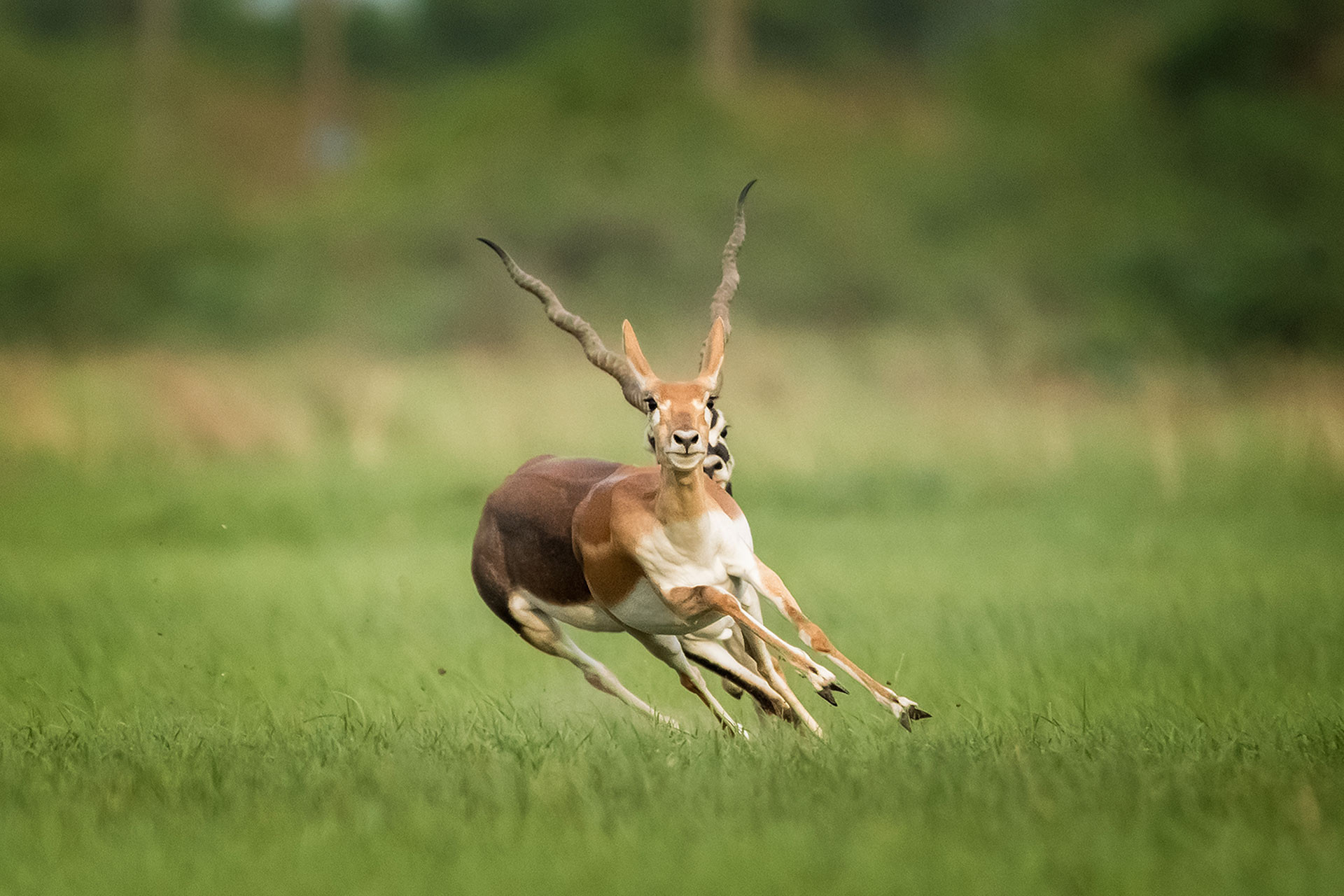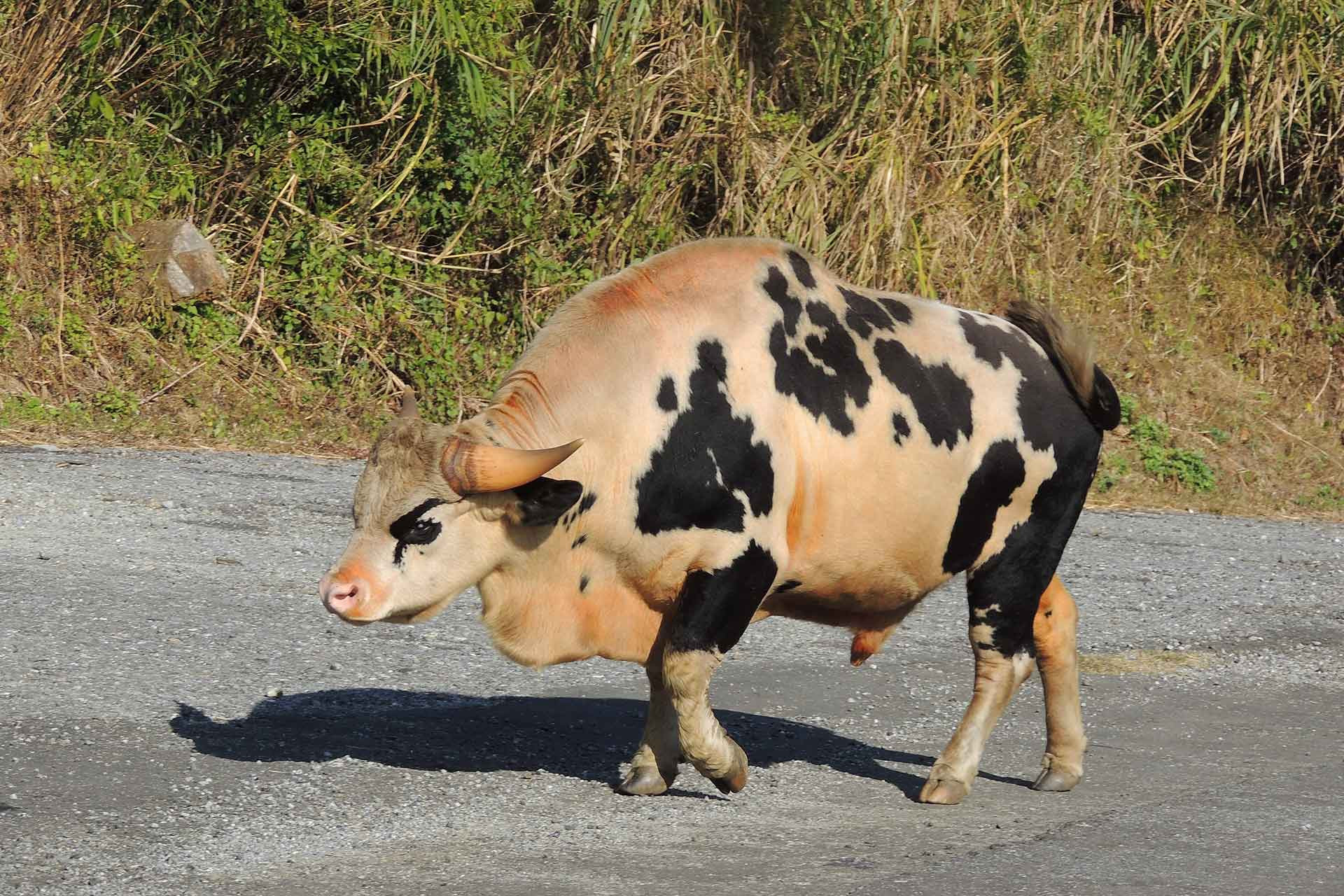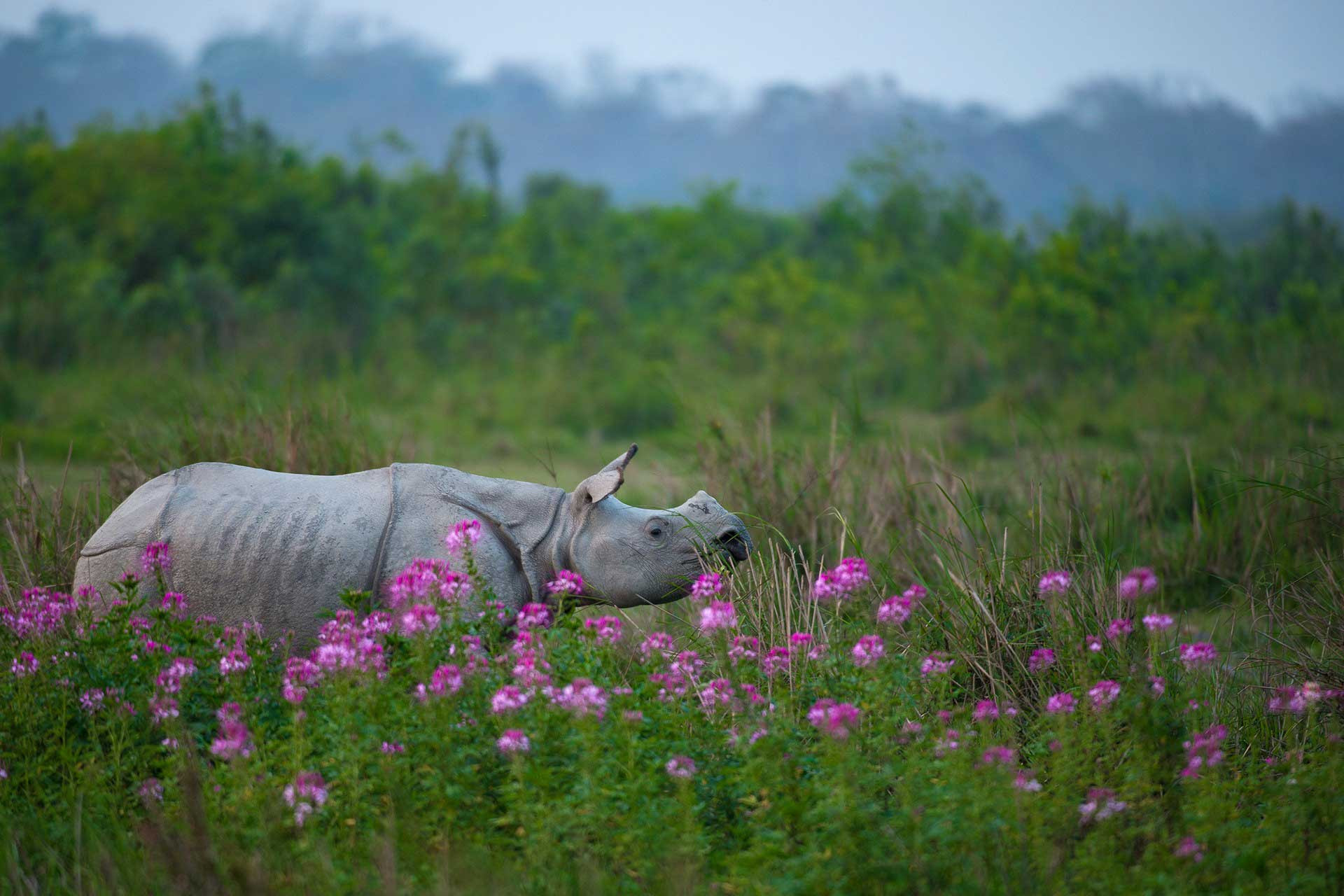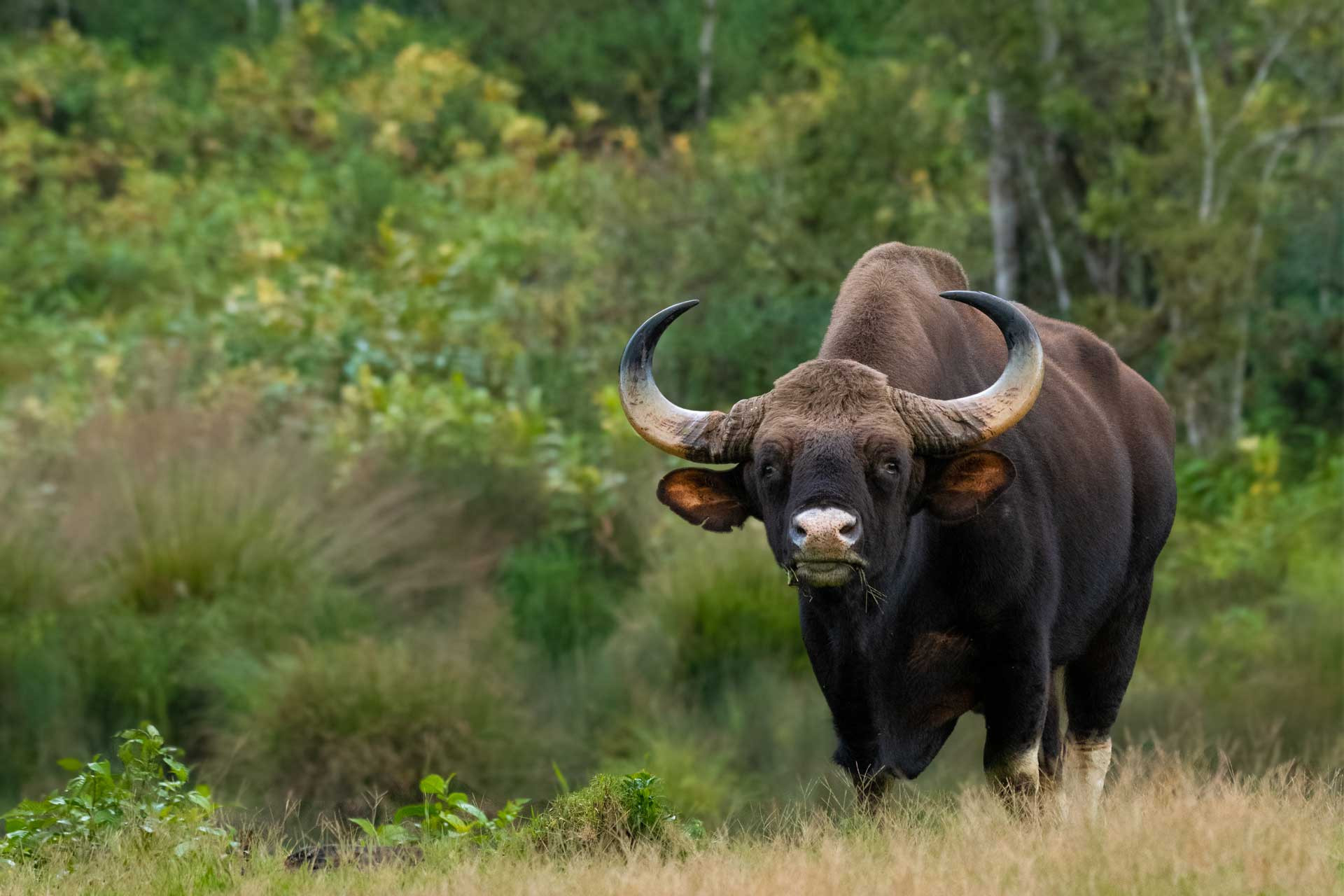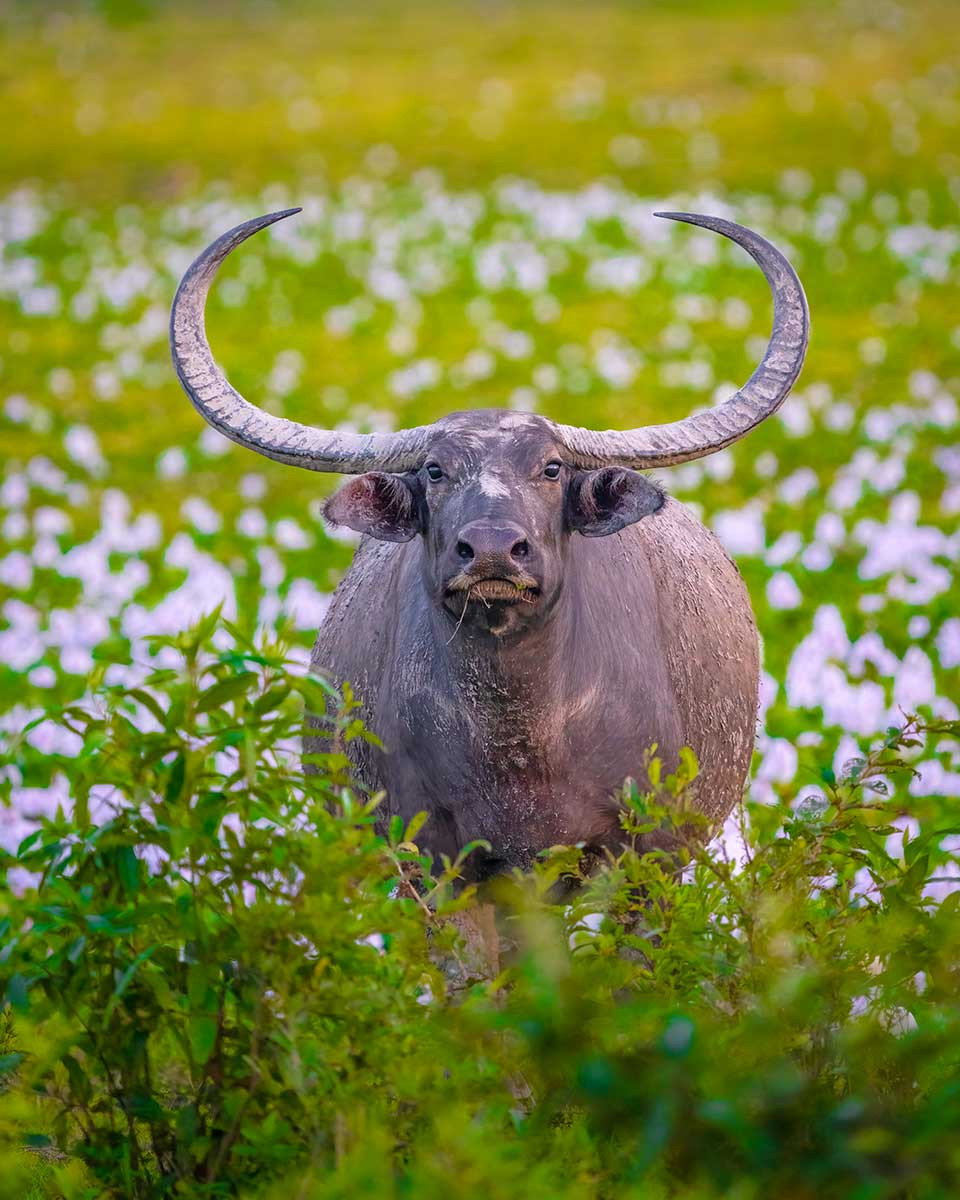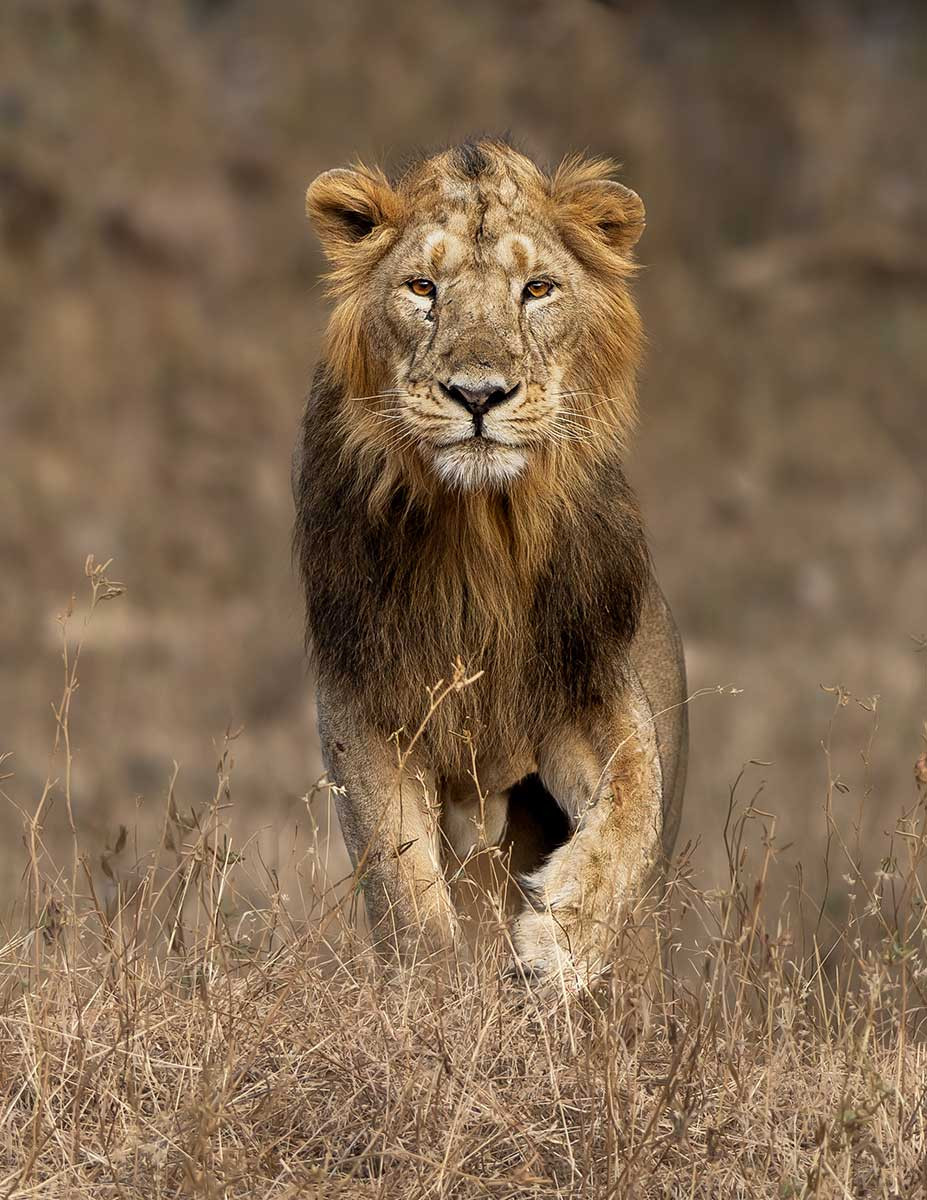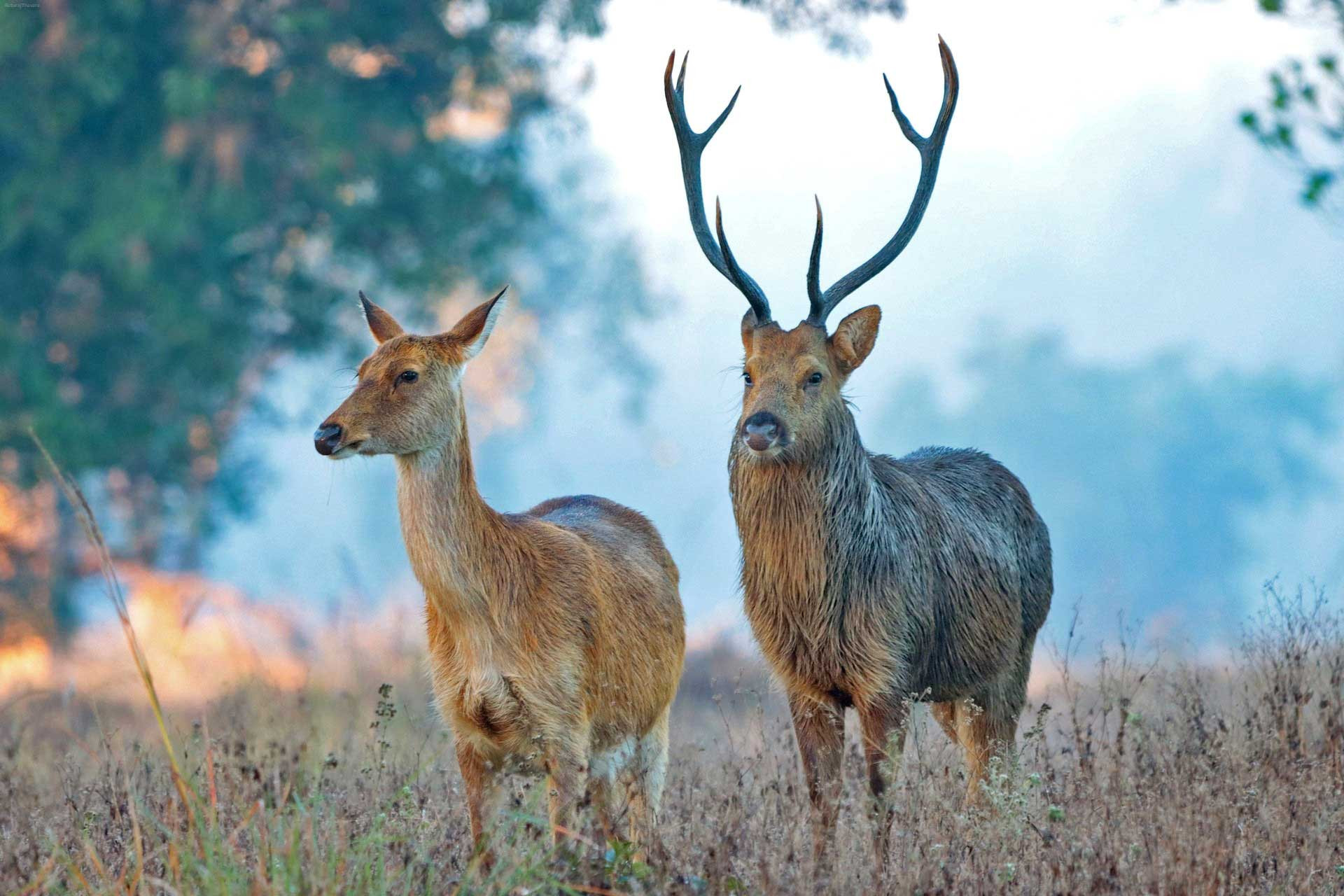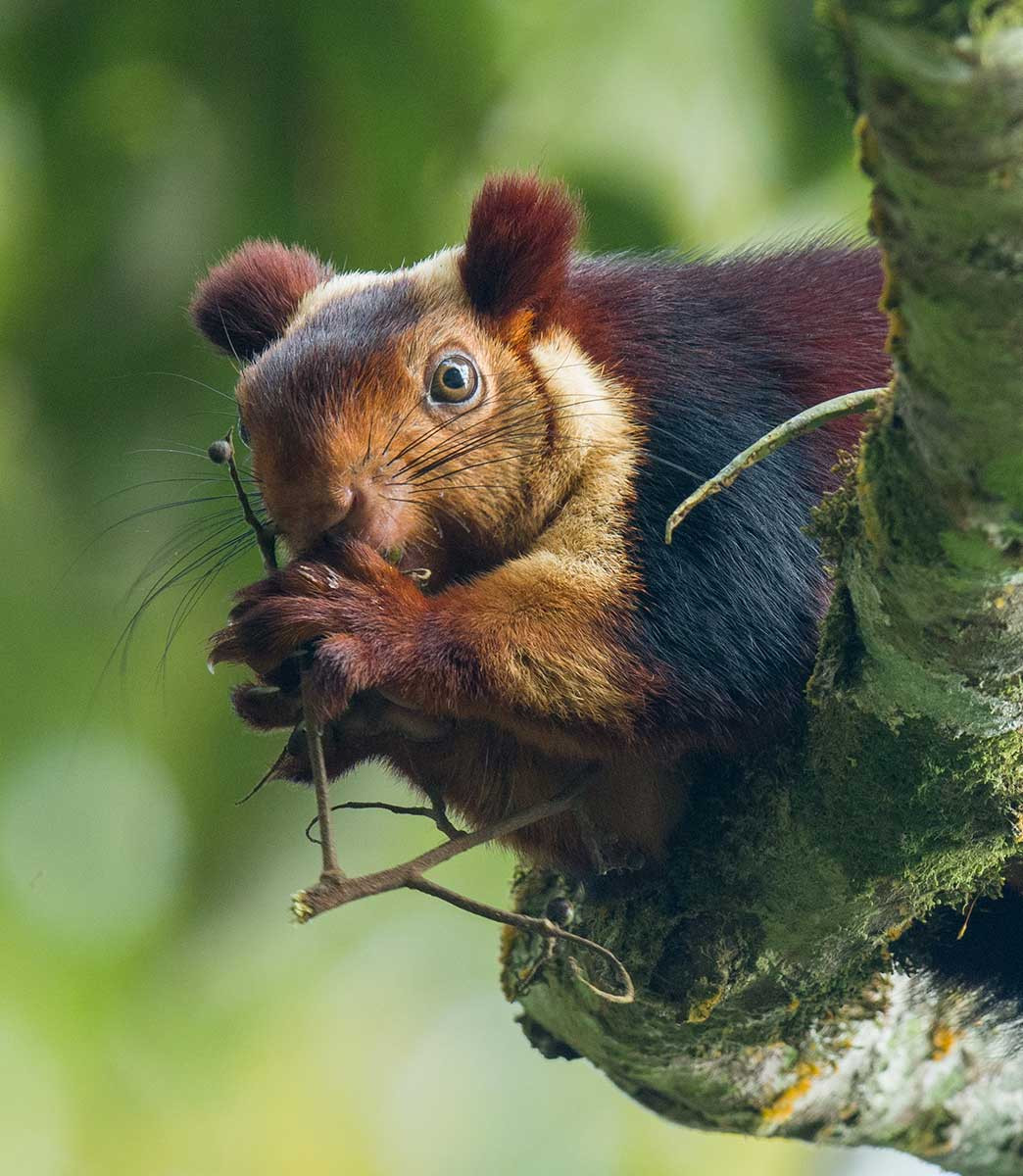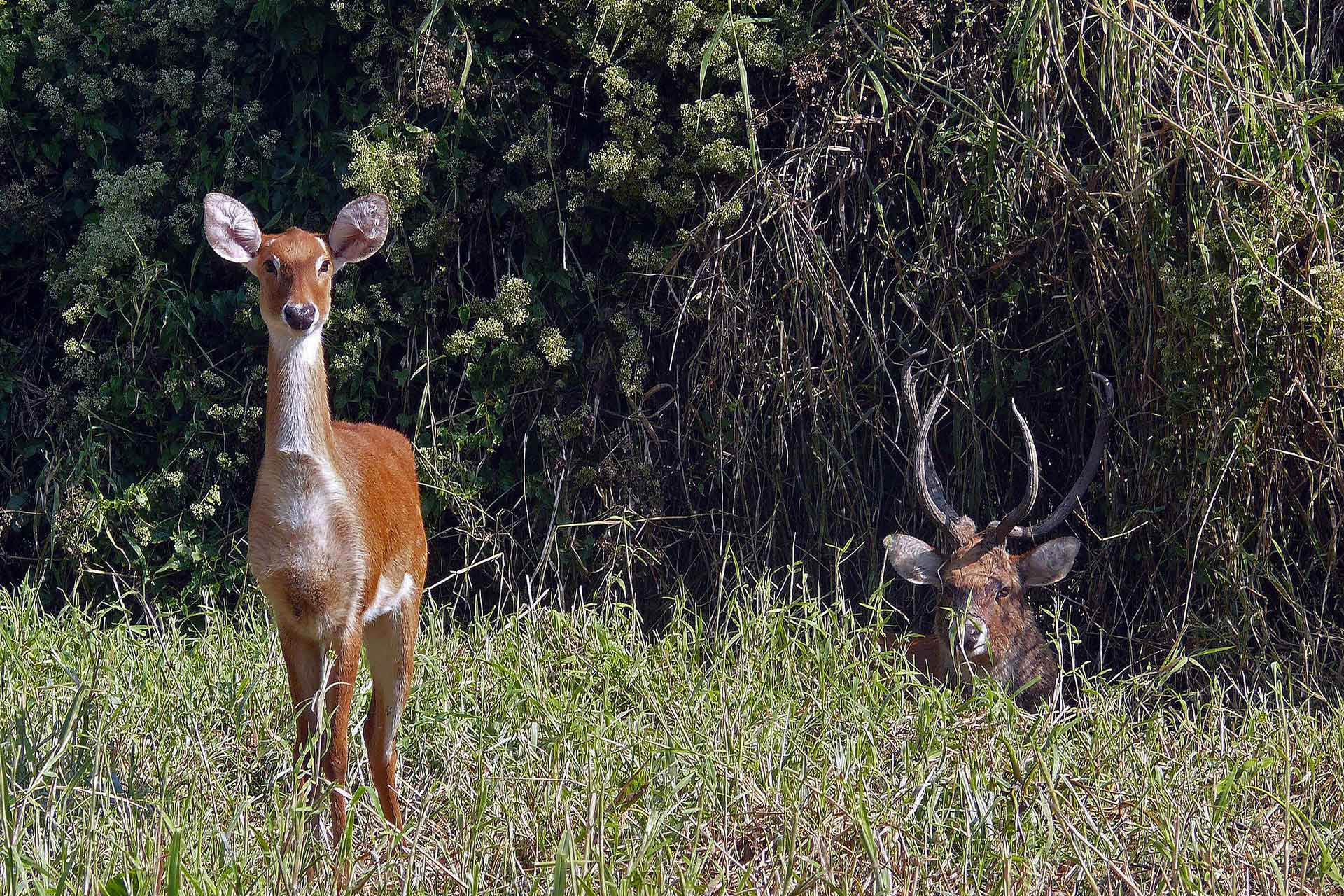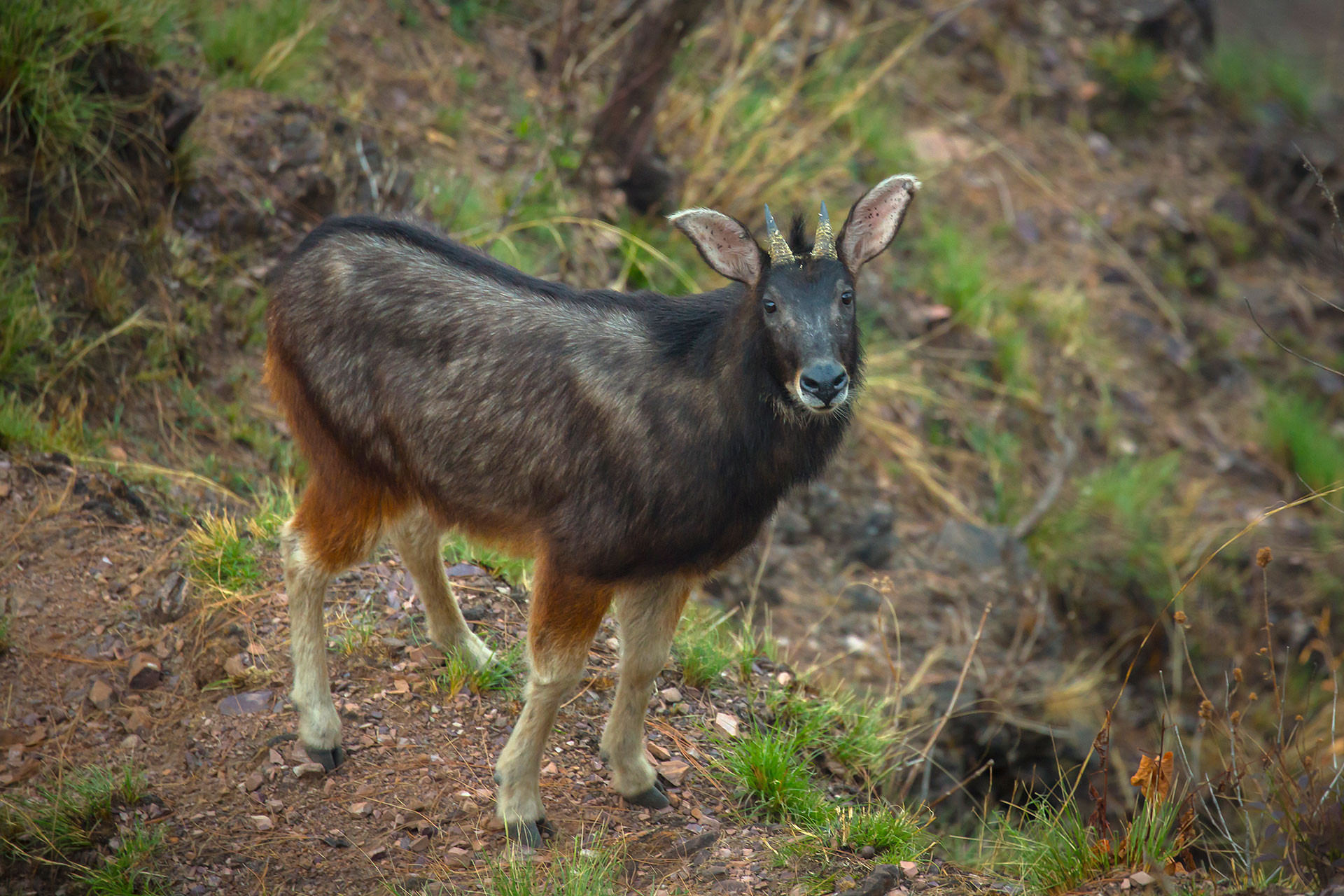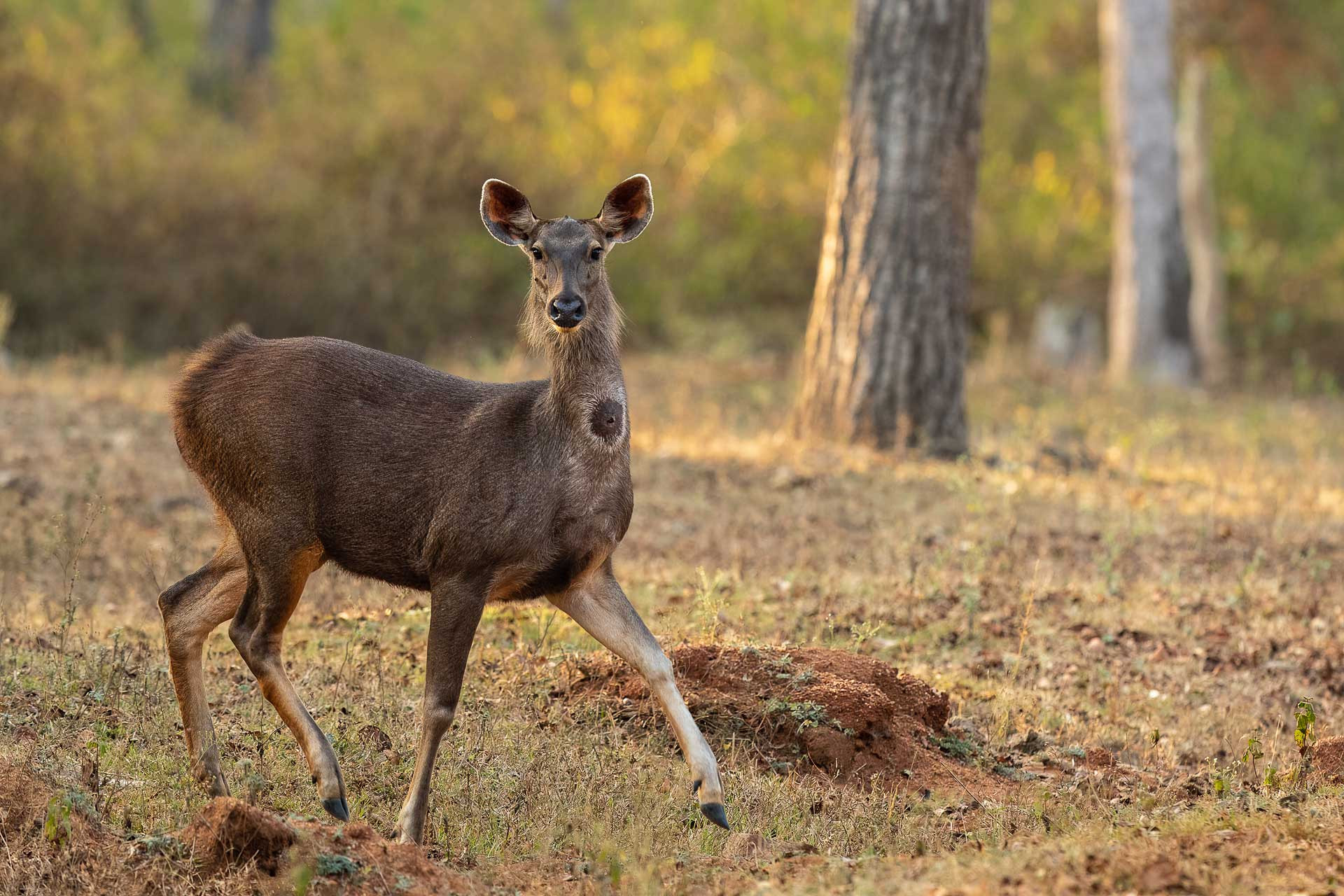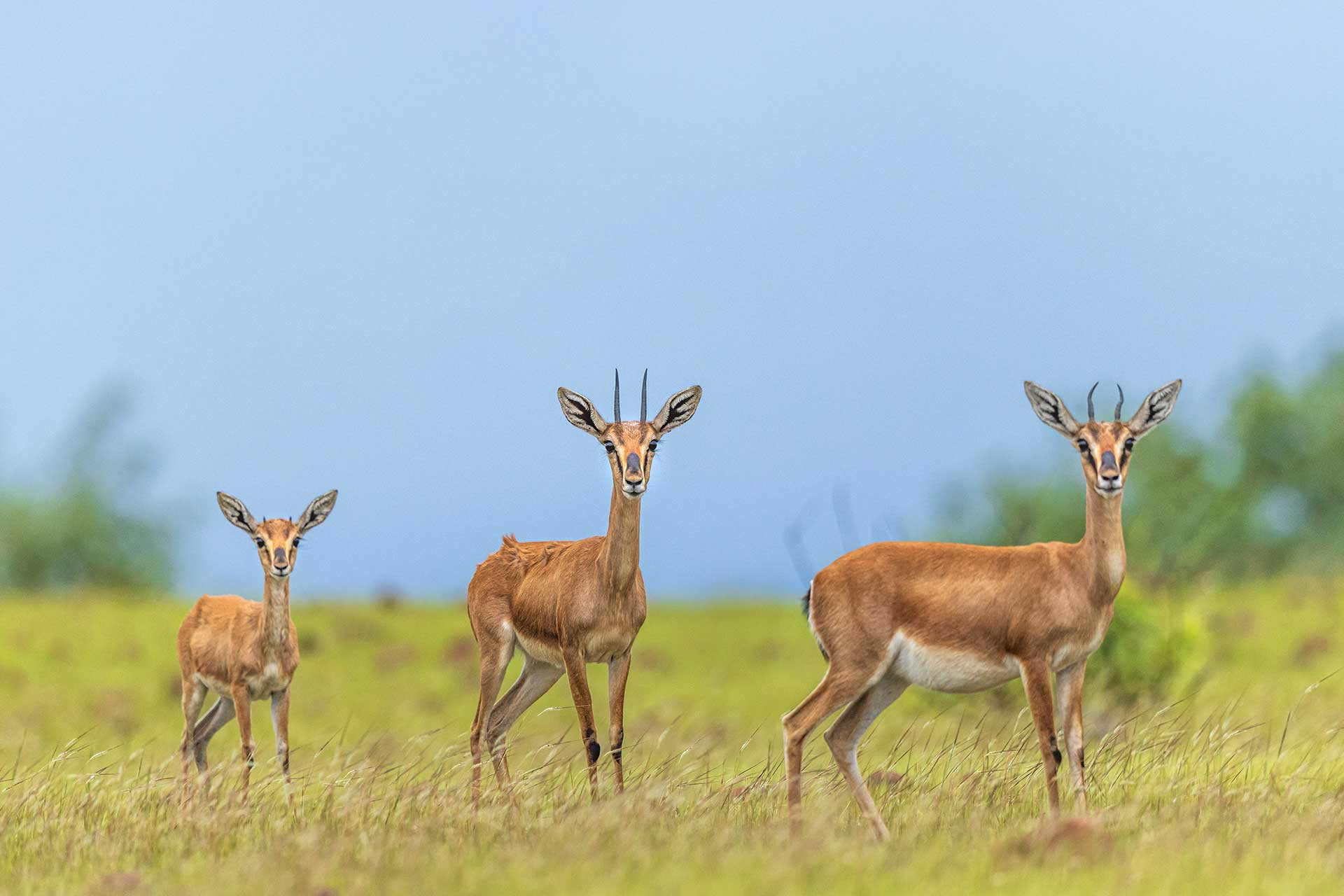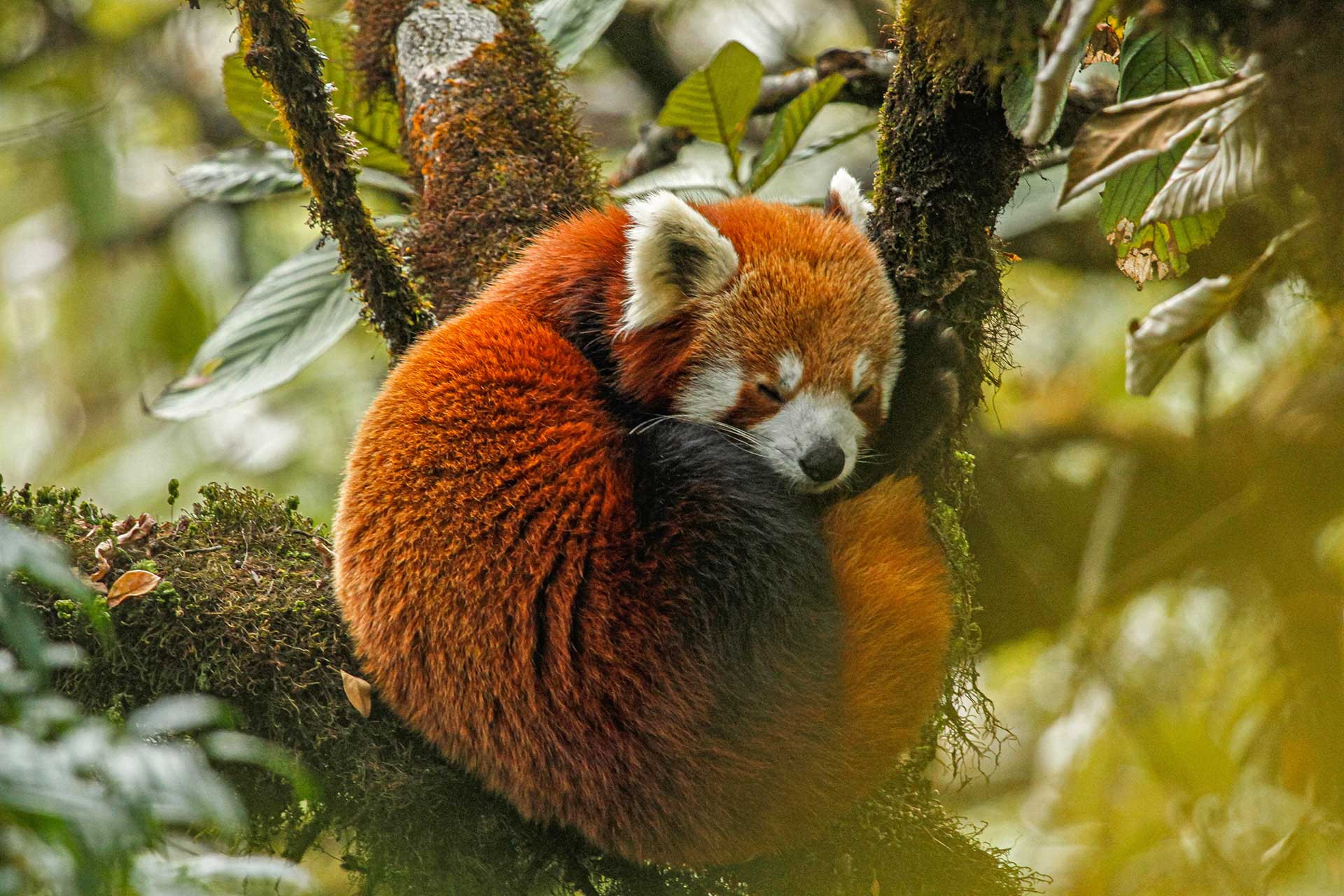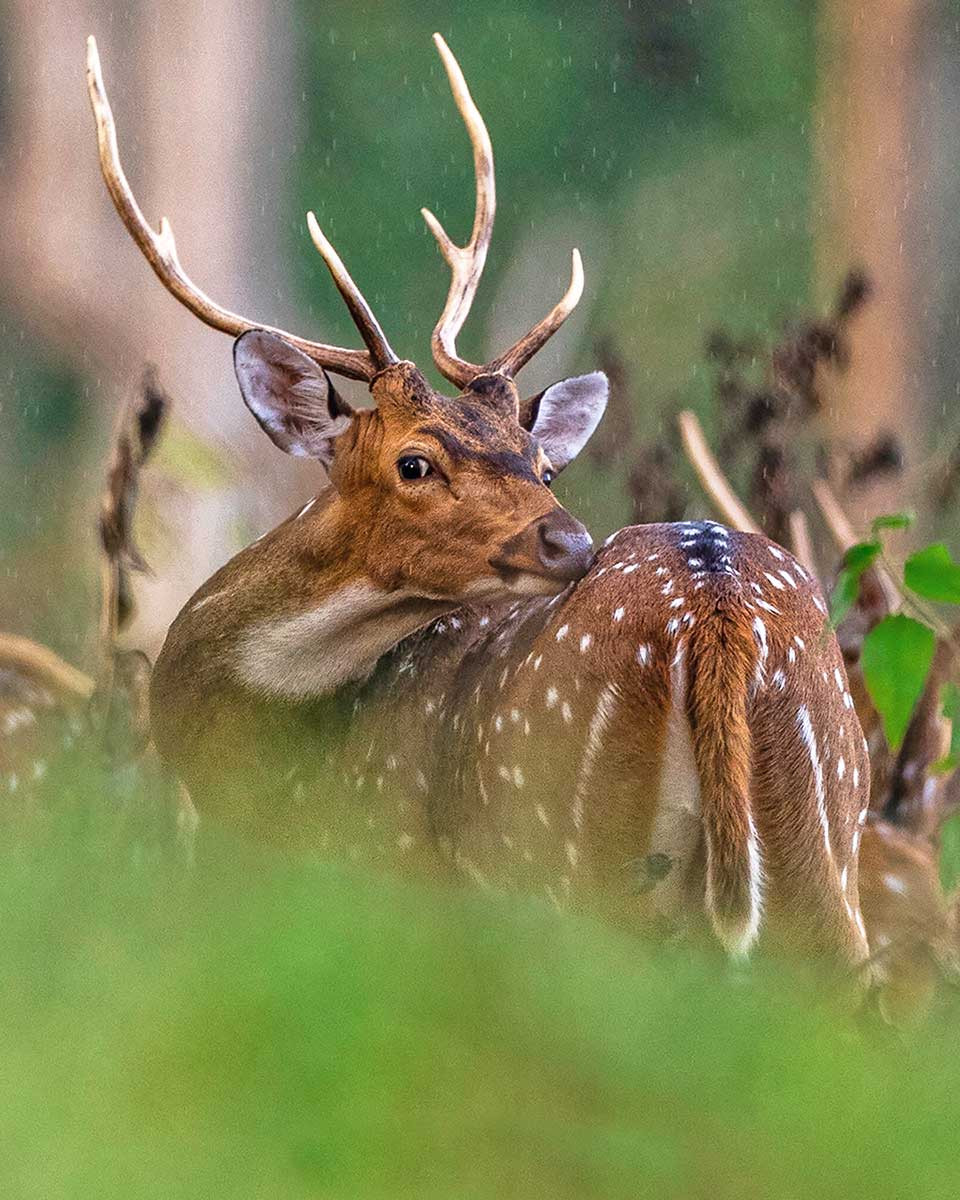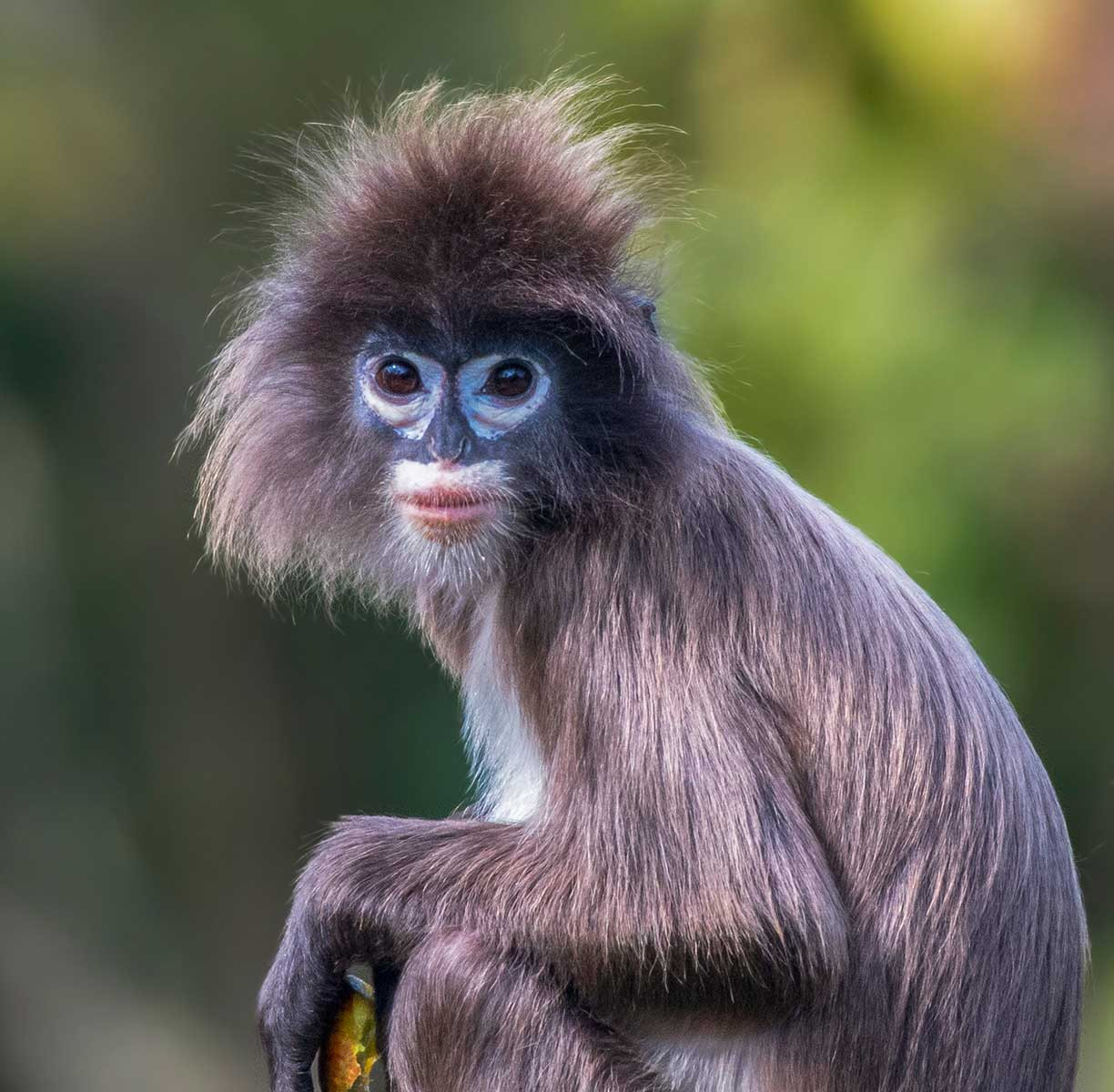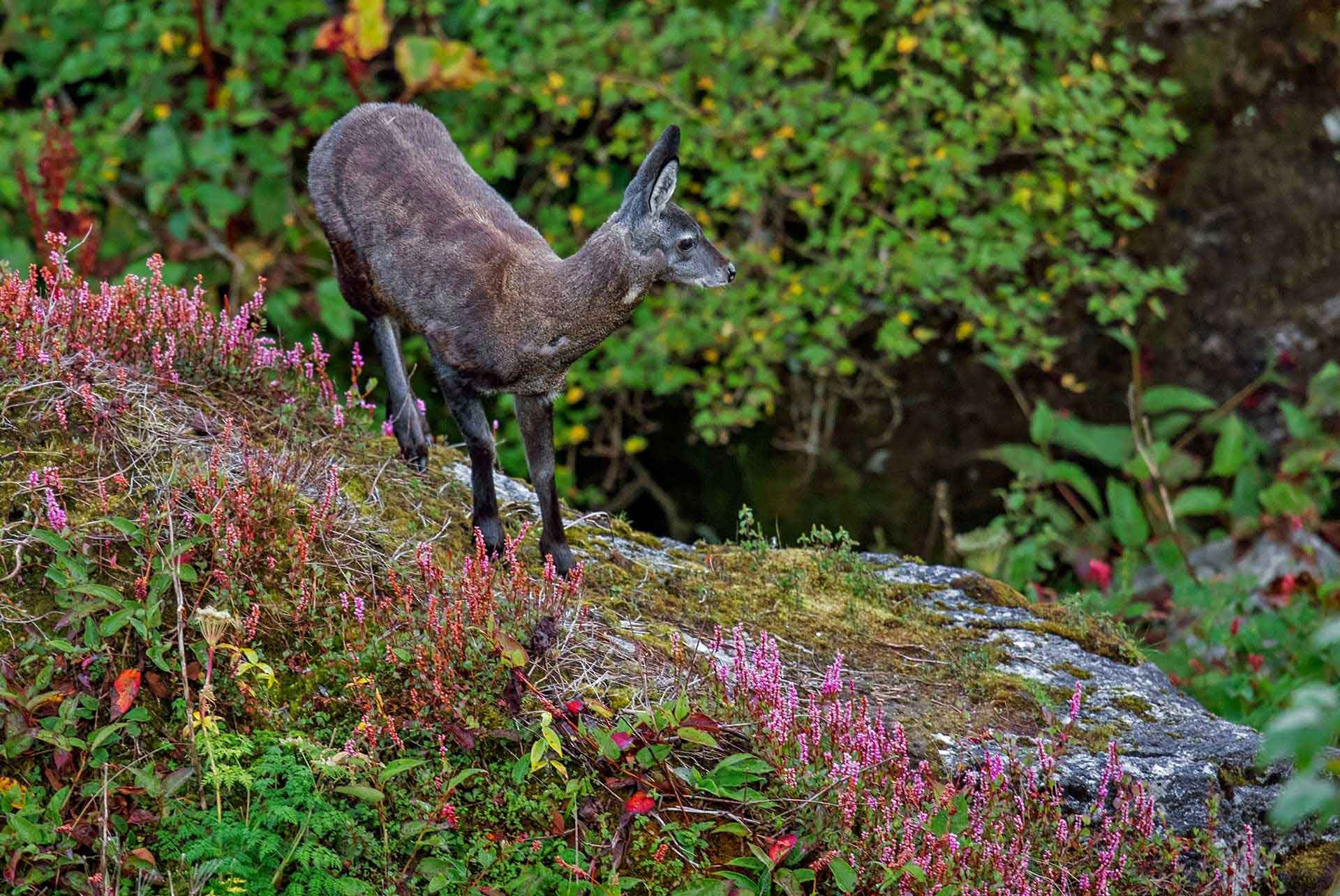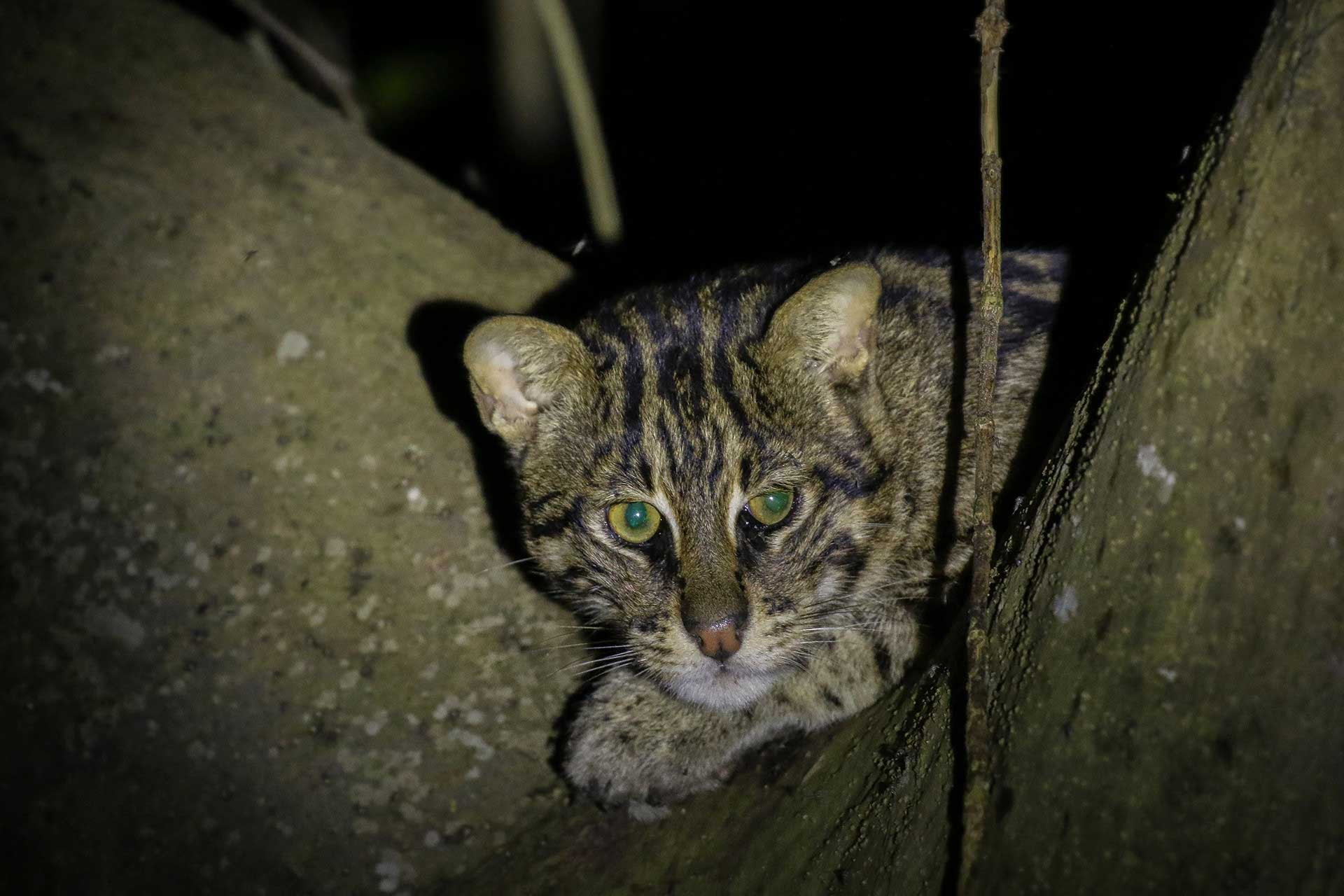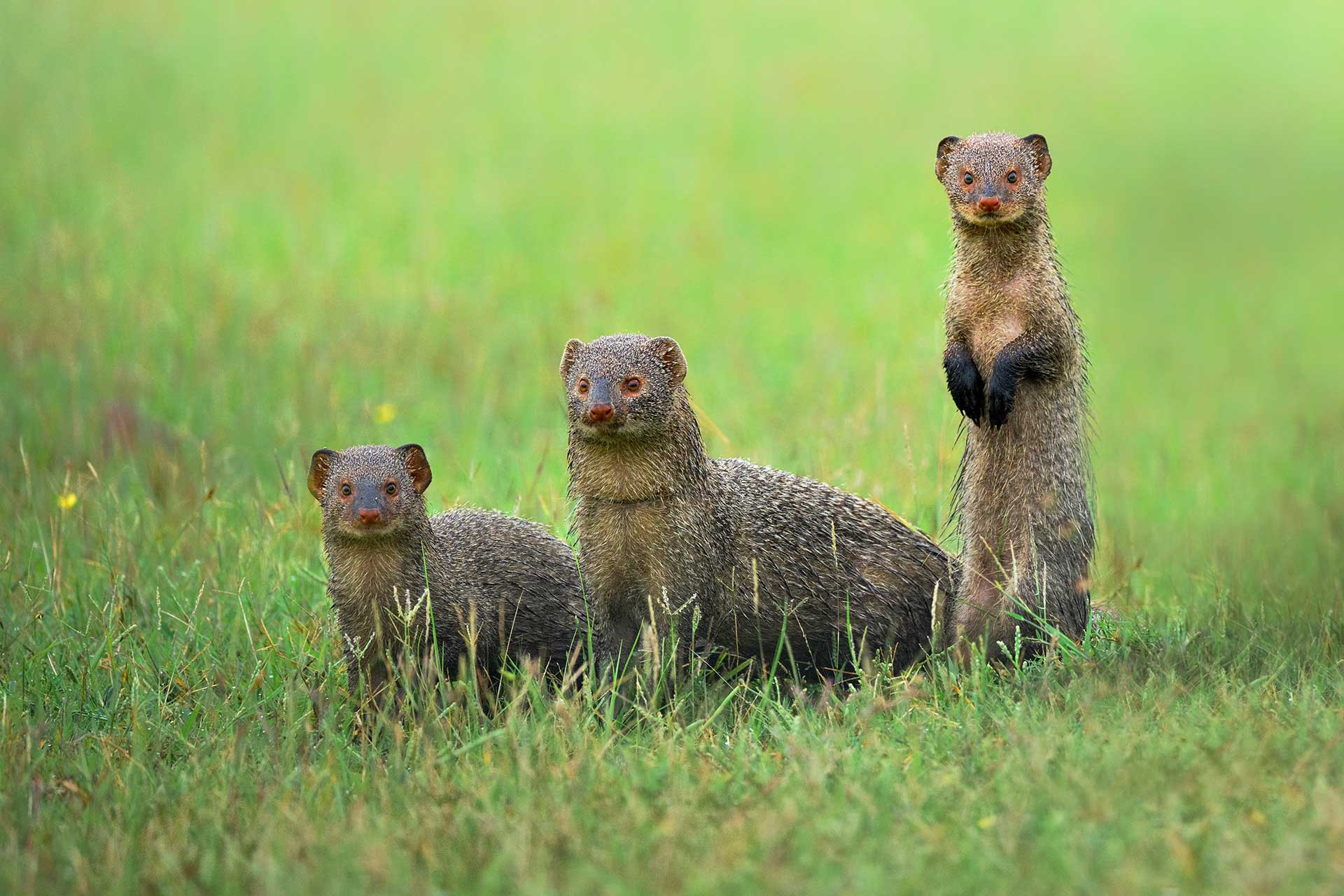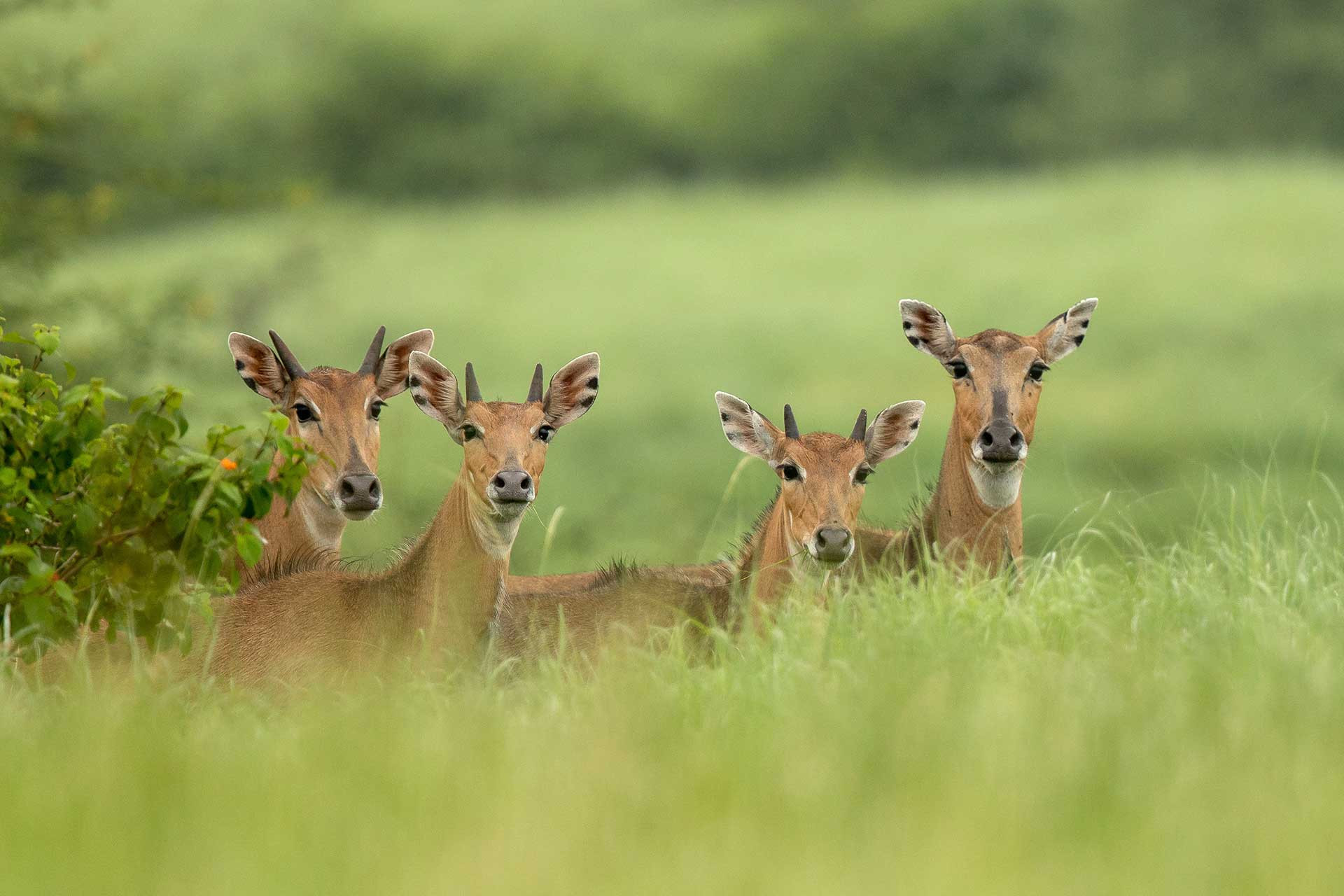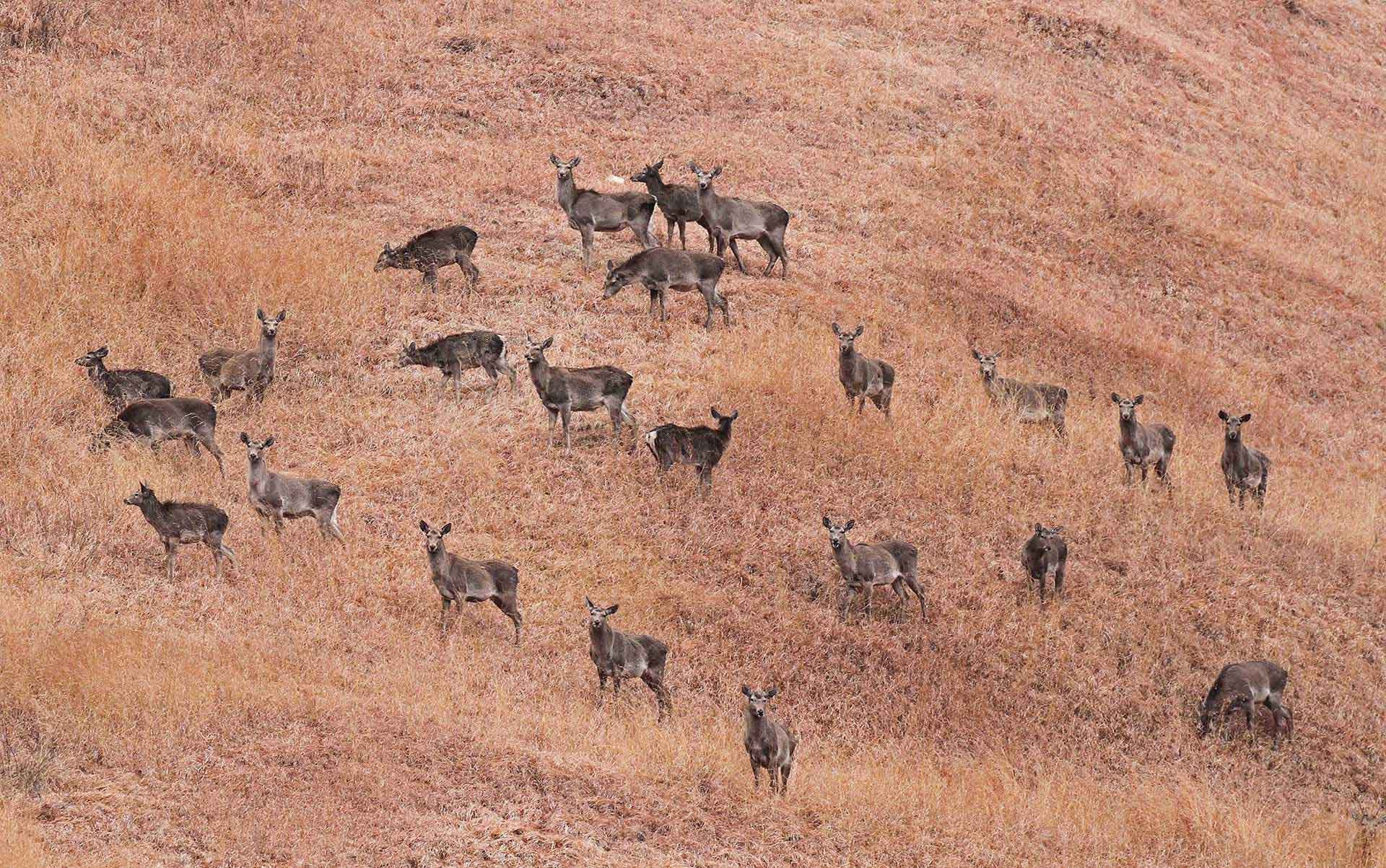A question you have most likely encountered in a general knowledge quiz is to name the official animal or bird of a state or union territory.
Most of us are familiar with the bird, animal and tree that represent our region. But do you know why we have these symbols, to begin with?
In an interview with Down To Earth, author and the person behind the Wild Life Protection Act, 1972, MK Ranjitsinh Jhala shared that he and his team members issued the concept to state governments in the 1970s. The main objective of declaring these state and union territory wildlife symbols was to give the endemic species special attention, administering a sense of pride in them.
While it may seem like a great way to increase awareness and encourage conservation, having the tag of 'State Animal' has worked for some species, while for many others, it has become an irrelevant piece of trivia. Mr Jhala shares the example of the Sangai, which was declared as Manipur's state animal in 1975. At the time, only 14 Sangai deer were present in the state. With the attention gained by virtue of its new status, the numbers increased considerably, and the locals also acknowledged the need to protect the animal.
We bring you some quick facts about the official animal of every state and union territory in India. While the facts may seem familiar, we ask you to take a step back and think about what the pedestal means for the animal itself. Some animals are the state species of more than one region, but they continue to fight for conducive habitats across their range. We hope the story increases awareness about these animals and encourages dialogues on building safer spaces for them to thrive.
Andhra Pradesh, Haryana, Punjab
Blackbuck (Antilope cervicapra)
IUCN Red List Status: Near Threatened
Boasting a pair of long, spiral horns and an impressive leap, the Blackbuck is an antelope species that needs no introduction. Their signature horn is a distinct morphological feature among male Blackbucks, absent in females. Blackbucks reside in grasslands and lightly wooded areas in herds that consist of anywhere between five to fifty individuals. The impressive antelope represents three Indian states and is designated as Near Threatened on the IUCN Red List. A range of threats plagues the Blackbucks in their respective states. In Andhra Pradesh, there are frequent reports of poaching for their meat and skin. In July 2022, record-level flooding in River Godavari severely impacted Blackbucks in the region, with several getting stuck on islets. Besides these issues, habitat destruction and the conversion of land for agriculture continue to be real concerns.
For more exciting facts about blackbucks and other Indian antelopes, here is a cheat sheet of all the different species found in the country.
Arunachal Pradesh, Nagaland
Mithun (Bos frontalis)
IUCN Red List Status: Vulnerable
Known as the ‘Cattle of Mountains’, the Mithun or Gayal is found in Arunachal Pradesh and the neighbouring states of Assam, Manipur, Mizoram, Nagaland and Tripura. The Mithun resides in forests within hilly areas and is semi-domesticated by several indigenous communities in the region. Though very similar to the Indian Gaur, the Mithun is smaller and has shorter limbs and thick horns that are not as curved. Mithuns are herbivorous and feed on shrubs and herbs. While not much is known about their population distribution, crossbreeding with local cattle and habitat destruction are major concerns for the species. Despite having a significant cultural value among indigenous communities, the Mithun remains a largely ignored species.
Assam
Indian Rhinoceros (Rhinoceros unicornis)
IUCN Red List Status: Vulnerable
Among the largest rhinoceros species in the world, the Indian Rhinoceros or Greater One-horned Rhinoceros can weigh anywhere between 1600 and 2200kg (depending on gender). Grasslands, shrublands and savannas are their preferred habitats, and they can often be found near swamps and riverbanks. Kaziranga and Manas National Parks in Assam are the last remaining strongholds of the Indian Rhinoceros. These megaherbivores mainly feed on grass, even using their horns to forage roots. With the increasing population, they often roam outside protected areas, leading to human-wildlife conflict situations. Habitat loss and poaching are the two major threats they face.
Find out more about the species in our story, 10 Things You Need To Know About The Indian Rhinoceros.
Bihar, Goa
Indian Gaur (Bos gaurus)
IUCN Red List Status: Vulnerable
Largest among the extant bovids, the Indian Gaur is found in habitats with an abundance of forage, like undisturbed forest areas. They are often seen in close proximity to water bodies. The bovids feed on grasses and shrubs. Despite their large size, gaurs are shy creatures that dash back into forest cover when they sense danger. Gaurs often share space with cattle while grazing making them susceptible to cattle-borne diseases. Poaching is another significant threat to the species.
In the Nilgiri Hills, Tamil Nadu, forest fragmentation is pushing gaurs to forage in farms, resulting in increased conflicts. Find out more here.
Chhattisgarh
Wild Water Buffalo (Bubalus arnee)
IUCN Red List Status: Endangered
The Wild Water Buffalo or Asiatic Buffalo is native to India and Southeast Asia. In India, these large bovids are found in protected areas like Manas National Park, Bura Chapori Wildlife Sanctuary and D’Ering Memorial Wildlife Sanctuary, to name a few. Despite being the state animal, the Wild Water Buffalo count in Chhattisgarh is abysmally low. According to a news article published in August 2021, the last female buffalo in the state died in the Sitanadi-Udanti Tiger Reserve. It is believed there are less than 20 Wild Water Buffalos in Chhattisgarh. The animal needs floodplains to survive, and habitat loss and interbreeding with domestic buffalos pose significant threats.
Habitat loss led by an expanding agrarian frontier has put the Wild Water Buffalo population in Assam under threat. Find out more here.
Gujarat
Asiatic Lion (Panthera leo leo)
IUCN Red List Status: Endangered
The poster child of Gir National Park, the Asiatic Lion was once deemed the country’s national animal. Previously considered a separate species, it has been established that the Asiatic Lion belongs to the same subspecies as the lions of Central and Western Africa, Panthera leo leo. The shorter and sparser mane among male Asiatic Lions helps in telling them apart from their African counterparts. Once on the brink of extinction, Asiatic Lions have since made a remarkable comeback. As of June 2020, there are about 674 lions in Gir and its surrounding areas. But with increased populations, the big cats are now venturing outside protected areas, placing them in harm’s way and leading to accidental deaths as well as poaching incidents. A spike in conflict situations due to livestock predation has also been reported. In July 2022, it was revealed that owing to shrinking habitats, lions are now even inhabiting coastal regions of Gujarat.
Want to know more about Asiatic Lions? Here are ten things you need to know about the magnificent felid.
Himachal Pradesh, Ladakh
Snow Leopard (Panthera uncia)
IUCN Red List Status: Vulnerable
The grey ghost of the Himalayas, the Snow Leopard is one of the most elusive cats in the world. Their range extends over about 2 million sq.km. in the central and south Asian mountains. They are highly adapted to life in the snow-clad mountains. Their grey coats and black rosettes aid them in hiding in plain sight amidst the rocky surroundings. Although they primarily feed on Blue Sheep and Himalayan Ibex, the leopards are now turning to livestock due to a depletion in their prey base. Climate change, retaliatory killings due to livestock predation and poaching are severely harming the country’s Snow Leopards.
Head over to our story 10 Things You Need To Know About Snow Leopards for more information about this elusive big cat species.
Jharkhand, Karnataka, Kerala
Indian Elephant (Elephas maximus indicus)
IUCN Red List Status: Endangered
One of the three recognised subspecies of the Asian Elephant, Indian Elephants are found in parts of India and several countries across Asia. They are habitat generalists and can survive in forests, shrublands and grasslands. The megaherbivores primarily feed on grasses, but they also eat roots, leaves and barks. A keystone species, elephants greatly influence land ecosystems and aid in seed dispersal. Habitat loss is among the biggest threats to the elephants of India. Linear intrusion projects cutting through habitats have added to their woes, isolating them from their food sources. The animals are forced to turn to agricultural areas for sustenance, increasing incidents of conflicts. Despite being the state animal of three states, the Indian Elephant is still waiting for its due.
Here is a rundown of some essential facts about these pachyderms.
Madhya Pradesh, Uttar Pradesh
Barasingha (Rucervus duvaucelii)
IUCN Red List Status: Vulnerable
Named after the 12 branches on their antlers, the Barasingha or Swamp Deer were once on the brink of extinction. More than five decades of dedicated conservation efforts saw the number of Barasinghas rise to about 800 in Kanha National Park in Madhya Pradesh. The highly social cervids are usually found in herds that consist of anywhere between 10 to 20 individuals. Male Barasinghas are solitary throughout the year, except during the breeding season when they fight with other males to establish dominance. Habitat destruction and poaching are significant concerns for India's Barasinghas.
Maharashtra
Indian Giant Squirrel (Ratufa indica)
IUCN Red List Status: Least Concern
The Indian Giant Squirrel or Malabar Giant Squirrel can be easily identified by its rufous coat with hints of purple. The arboreal species feeds on fruits, flowers, bark, nuts and sometimes insects and bird eggs. The rodent can often be seen stretching or hanging upside down to reach a food source, and is known for its impressive leaps when navigating from one tree to another. Although designated as Least Concern from a conservation point of view, the felling of trees to make way for developmental and agricultural activities is a matter of concern for local populations.
Get a sneak peek of the country’s giant squirrels in our story, The Giant Squirrels Of India.
Manipur
Sangai (Rucervus eldii eldii)
IUCN Red List Status: Endangered
Also known as Dancing Deer, Eld’s Deer or Brow-antlered Deer, the Sangai is identified by its distinct antlers, with the ones in the front appearing to emerge from its eyebrows. Sangais have an extremely restricted range that extends over a 20sq.km. area in the Keibul Lamjao National Park in Manipur. Here, they occupy floating lakes, locally known as Phumdi, a combination of vegetation, accumulated organic debris and soil that floats above the water and hosts a diverse range of species. Artificial storage of water and repeated floods impact their habitats, placing these medium-sized deer under constant threat. According to a recent study, the Sangai’s habitat will undergo further degradation in the next decade owing to the climate crisis.
Meghalaya
Clouded Leopard (Neofelis nebulosa)
IUCN Red List Status: Vulnerable
Clouded Leopards are residents of the Himalayan foothills, and their range extends from Southeast Asia to the southern parts of China. The felids sport a dark grey coat with black or greyish-black patterns and stripes. Clouded Leopards have dexterous paws and tailored ankle bones that aid them in holding onto branches and climbing trees. The cats feed on a range of animals like macaques, gibbons, deer and boars. Deforestation and illegal wildlife trade for their skin, claws and teeth are some of the biggest threats to the species. According to an article published in 2020, Meghalaya and the neighbouring states of Mizoram and Tripura are taking significant steps to protect the habitats of Clouded Leopards.
Mizoram
Himalayan Serow (Capricornis sumatraensis thar)
IUCN Red List Status: Vulnerable
A subspecies of the Mainland Serow, the Himalayan Serow is a medium-sized mammal identified by its black coat and the red colour on its upper legs. Recognised as the state animal of Mizoram, the Himalayan Serow is found in altitudes between 6,500 and 13,000 feet. With a significant decline in the herbivore’s habitats, the conservation status of the Himalayan Serow was changed from Near Threatened to Vulnerable. In 2015, more than 20 Himalayan Serows were found dead in Mizoram due to a mysterious illness. The incident also highlighted the lack of veterinary expertise to treat the mammal.
Odisha
Sambar (Rusa unicolor)
IUCN Red List Status: Vulnerable
Native to India and Southeast Asia, Sambar Deer are characterised by a brown-coloured coat with a greyish-yellow tinge. Male Sambar Deer have rugged antlers, while pregnant or lactating females often display a red spot on the underside of their throats. The cervids reside in tropical dry forests, scrublands, mixed forests, grasslands and tropical rainforests. They are often found close to water bodies within their habitats and feed on grasses and water plants. While threats vary based on geographical location, habitat loss and poaching are the primary concerns for the species.
Rajasthan
Chinkara (Gazella bennettii)
IUCN Red List Status: Least Concern
Chinkaras or Indian Gazelles are identified by their glossy reddish coat and are found in deserts, light forests and scrublands. They can survive without water for extended periods (keeping themselves hydrated with dew drops). Rajasthan’s Thar Desert is known to house a large percentage of the species. But, recent reports indicate that the animal needs our immediate attention. In July 2022, the premature death of about 100 Chinkaras in the state raised alarm bells for the species. From poaching to feral dog attacks and solar power projects that block their natural pathways, Chinkaras face numerous threats.
For more facts about Chinkaras and other Indian antelopes, here is a cheat sheet of all the different species found in the country.
Sikkim
Red Panda (Ailurus fulgens)
IUCN Red List Status: Endangered
Known for its fiery red and white coat, the elusive Red Panda is an arboreal panda species that prefers montane, broadleaf forests and bamboo thickets as habitats. The eastern Himalayas contribute to 50 per cent of their habitat and Red Pandas are Sikkim’s state animal. Habitat loss and fragmentation are some of the biggest threats to the species. Red Pandas follow a vegetarian diet and mainly feed on young shoots and leaves of bamboo. These plants are susceptible to the impacts of deforestation—reduced canopy cover and temperature changes—which in turn affects the panda’s food source, adding to their woes.
Here is a sneak peek into the arboreal world of the Red Panda.
Tamil Nadu
Nilgiri Tahr (Nilgiritragus hylocrius)
IUCN Red List Status: Endangered
As the name suggests, the Nilgiri Tahr is found in the Nilgiri Hills in Tamil Nadu, where it resides in the shola grasslands. The species is endemic to the states of Kerala and Tamil Nadu and is seen in other Western Ghats locations such as Eravikulam National Park, Anamalai Tiger Reserve, etc. The short goats have coarse fur and curved horns. While male and female tahrs display horns, males have longer horns and weigh more. The Nilgiri Tahr is a species in decline with just under 2000 mature individuals left in the wild today. Habitat loss is a primary threat to the species. In December 2022, it was reported that the Government of Tamil Nadu had launched a conservation initiative to protect the Nilgiri Tahr and better understand their population using radio telemetry.
In his story, Tahrs In Danger, wildlife photographer Vedansh Pandey writes about the importance of educating people about the endangered animal to bolster conservation efforts.
Telangana
Spotted Deer (Axis axis)
IUCN Red List Status: Least Concern
Chital or Spotted Deer are native to the Indian subcontinent. As the name suggests, their rufous-coloured torsos display prominent white spots, while their abdomen, tail and ears are white. Male deer have three-pronged antlers, which are shed every year. Spotted Deer reside in grasslands and forest areas and mainly feed on grasses, fruits, herbs and shrubs. Although designated as Least Concern, local populations are impacted by poachers who hunt them for their meat. In addition, competition with livestock is a major concern.
Tripura
Phayre's Leaf Monkey (Trachypithecus phayrei)
IUCN Red List Status: Endangered
Known for the distinct white patches around their eyes, Phayre’s Leaf Monkeys are nocturnal, leaf-eating primates that reside in deciduous, evergreen and semi-evergreen forests in the northeastern parts of India, mainly in Cachar, Tripura and Mizoram. The Sepahijala Wildlife Sanctuary in Tripura is a key habitat area for the spectacled monkey. Their habitats have undergone severe fragmentation due to the rampant clearing of forests for plantation and developmental activities. The endangered monkey is also hunted for its meat and for the preparation of traditional medicines.
The Phayre’s Leaf Monkey is one of India’s seven primates that are rapidly losing their habitats. Find out more about India’s endangered primates.
Uttarakhand
Alpine Musk Deer (Moschus chrysogaster)
IUCN Red List Status: Critically Endangered
Native to the eastern Himalayas, the Alpine Musk Deer belongs to the Moschidae family. The deer species is distributed throughout the Himalayas, usually between 2000 and 5000m above sea level. These herbivores feed on grasses, lichens, shoots, flowers and roots. The deer is widely hunted for its musk which is used for cosmetic purposes. They are also victims of the illegal animal trade. Alpine Musk Deer require dense forest areas for survival, and increased deforestation is adding to their threats. The Valley of Flowers in the Nanda Devi Biosphere Reserve in Uttarakhand is a UNESCO World Heritage site—a haven for exotic floral species where you can catch a glimpse of the rare Alpine Musk Deer.
West Bengal
Fishing Cat (Prionailurus viverrinus)
IUCN Red List Status: Vulnerable
Largest among the small cats, the Fishing Cat is locally known as Baghrol or Machbagha (fish tiger) in Bengali. The felid has a grey coat with black markings. Apart from the short limbs and a stocky torso, they have distinct webbed front toes that aid them in swimming. Water bodies, mangroves and marshlands in low-lying areas are ideal habitats for these cats. They mainly feed on fish, although they are also known to eat rodents. Habitat loss and degradation are significant threats to the species. Conflict situations with fisherfolk also endanger the Fishing Cat, and they often succumb to retaliatory killing due to their dependence on fish for survival.
For more about the Baghrol, head over to our story, The Fishing Cat Guide.
Andaman and Nicobar Islands
Dugong (Dugong dugon)
IUCN Red List Status: Vulnerable
Commonly known as Sea Cows, Dugongs are marine mammals that primarily feed on seagrasses in shallow coastal areas. Locally known as Paani Suar (water pig), they used to be a common sight at the ‘Dugong Creek’ in Little Andaman. Alteration of coastal habitats, trawling, incidental captures during fishing, pollution of marine ecosystems and the impacts of changing climate on seagrass growth have cumulatively affected local Dugong populations. Dugong conservation has shed light on shallow marine habitats and the diverse species that depend on this ecosystem.
Chandigarh
Indian Grey Mongoose (Urva edwardsii)
IUCN Red List Status: Least Concern
The Indian Grey Mongoose is found in forests, scrublands, agricultural fields and near human settlements. Although frequently mistaken as a rodent, the Indian Grey Mongoose belongs to the Herpestidae family, which includes meerkats and civets. The animal is a solitary hunter, and spends early mornings and late evenings in search of reptiles. Apart from snakes, these opportunistic hunters also feed on eggs, beetles, rats, fruits, berries and roots. Localised populations are affected by poaching, and a greater understanding of mongoose populations and their distribution will aid in understanding the challenges faced by the species.
Delhi
Nilgai (Boselaphus tragocamelus)
IUCN Red List Status: Least Concern
Also known as the Blue Bull, Nilgai occupy a wide range of habitats like shrublands, grasslands, agricultural lands and forests. Nilgais are the largest species among Indian antelopes. They feed on herbs, grasses and woody plants. As green spaces are shrinking, they look for alternative food sources in agricultural lands. Nilgais often raid fields and trample crops causing significant damage. To keep them at bay, farmers use live wires around their farms, which also impacts other animals. Without compensatory mechanisms and natural solutions, the animals are often killed in retaliation for crop damage. The state animal tag does not really help the Nilgai, a species often considered vermin.
For more facts about Nilgais and other Indian antelopes, here is a cheat sheet of all the different species found in the country.
Jammu and Kashmir
Kashmir Stag (Cervus hanglu hanglu)
IUCN Red List Status: Critically Endangered
Endemic to the Kashmir region, the Kashmir Stag is a subspecies of the Central Asian Red Deer. The animal is also called Hangul and has prominent antlers with five tines. Hanguls are brown in colour with a distinct patch on their hinds. Riverine forest areas and mountainous regions are their preferred habitats. The Dachigam National Park in Kashmir is a critical habitat for the species. Diminishing habitat spaces, overgrazing by livestock and poaching are the major threats to the species, which is on the verge of extinction. As of 2021, it was reported that there are about 261 Hanguls left in the union territory, which are further affected by disturbed corridors.
Lakshadweep
Indian Vagabond Butterflyfish (Chaetodon decussatus)
IUCN Red List Status: Least Concern
Situated off India's west coast, in the Arabian Sea, the Lakshadweep archipelago is India's only coral island chain. The Indian Vagabond Butterflyfish, a ray-finned fish found in the coral-rich marine ecosystems of the Indo-West Pacific, is recognised as the state fish of the Lakshadweep Islands. The species has a silver body marked with grey lines, a black band near the eyes, and yellow markings on its tail. The butterflyfish is a benthic (bottom of the sea) feeder, even feeding on live corals.
Puducherry
Indian Palm Squirrel (Funambulus palmarum)
IUCN Red List Status: Least Concern
Indian Palm Squirrels or Three-striped Palm Squirrels can be easily identified by their bushy tails and greyish-brown torsos with visible white stripes. Members of the rodent family, they are found in India and Sri Lanka and were later introduced to Mauritius, Seychelles and the other surrounding islands. They feed on fruits, insects, nuts and even cooked food. Indian Palm Squirrels are known to guard their food from other squirrels and birds. The animal does not face any significant threat.

